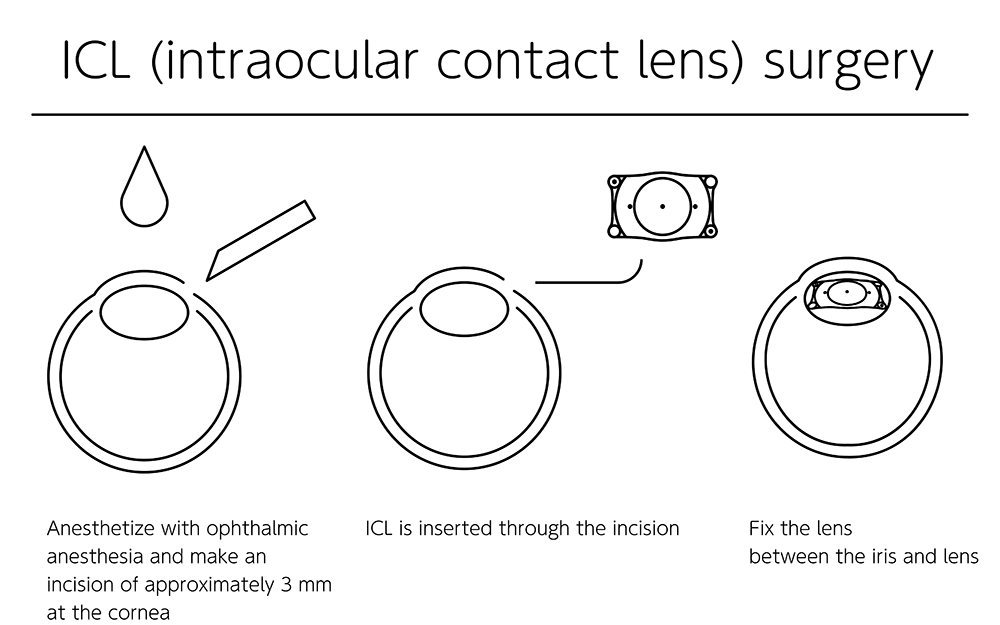Many people worry about getting LASIK with high prescriptions. By 2050, experts predict that half of the world’s population will be short-sighted. This makes questions about vision correction more important than ever before. Nearly two-thirds of adults now use prescription eyeglasses. Many of these people wonder if their prescription exceeds the limits for laser eye surgery.
Medical professionals consider prescriptions high when short-sightedness reaches -6.00 diopters or more, long-sightedness hits +4.00 diopters or more, and astigmatism exceeds 3.00 diopters. Modern laser eye surgery can fix a wider range than most people think. Standard LASIK works for prescriptions between -0.5 D to -8.0 D for short-sightedness. Advanced procedures can push these boundaries by a lot.
Laser eye surgery can fix prescriptions up to -10.00 diopters for short-sightedness, +5.00 for long-sightedness, and up to ±5.00 diopters of astigmatism. New techniques like ReLEx SMILE let doctors treat patients who have thinner corneas and prescriptions stronger than -10.0D. This piece explains your treatment options for high prescriptions, what makes you suitable for the procedure, and other solutions that might work better when standard LASIK isn’t right for your eyes.

Understanding High Prescription Ranges in LASIK
Eye specialists use dioptre values to measure your eye’s refractive power. These measurements help determine if your prescription qualifies as “high.”
What qualifies as a high prescription in myopia, hyperopia, and astigmatism
High prescriptions include myopia (short-sightedness) of -6.00 dioptres or stronger, hyperopia (long-sightedness) of +4.00 dioptres or higher, and astigmatism of 3.00 dioptres or above. People with severe myopia beyond -6.00 dioptres make up about 10% of myopic cases. Doctors call this condition ‘myopia magna’ or ‘pathological myopia’. This severe form increases risks of retinal degeneration and detachment. High hyperopia affects a smaller group – 5-10% of people have severe farsightedness of +6.00 dioptres or stronger.
UK-specific LASIK treatment thresholds for high prescriptions
UK specialists follow specific thresholds when evaluating LASIK candidates. Most clinics limit treatments to around -10.00 dioptres for myopia, +6.00 dioptres for hyperopia, and up to 6.00 dioptres for astigmatism. These numbers serve as guidelines rather than strict rules. A patient with -12.00 prescription might qualify while someone with -9.00 might not, based on other factors.
How dioptre values affect treatment planning
Your prescription’s strength shapes many aspects of your treatment plan. LASIK surgeons reshape the cornea through tissue removal. Higher prescriptions need more tissue removal, which makes corneal thickness a vital factor. Prescription stability plays a key role – doctors usually want to see 12 months of consistency before surgery.
Myopia corrections require more corneal tissue removal with each negative dioptre increase. Hyperopia works differently – surgeons remove tissue in a ring pattern around the cornea’s edge. Plus-value prescriptions create unique challenges compared to minus values. Re-treatment rates vary with prescription strength. High myopia patients (beyond -6.00 dioptres) might need more re-treatments than those with lower prescriptions. Severe myopia cases show a re-treatment rate of about 13.6%.
LASIK Treatment Limits by Refractive Error
Modern LASIK technology gives you many treatment options for high prescriptions. Your specific refractive error determines certain limits. These boundaries help you set realistic expectations about what you can achieve.

Myopia: Treating up to -10.00D with corneal safety in mind
LASIK can fix short-sightedness (myopia) up to -10.00 diopters. Some advanced systems claim they can treat myopia as high as -12.00D. Most respected clinics stick to a safer limit of -8.00D to -10.00D. This careful approach exists because higher prescriptions need more corneal tissue removal. Your surgeon must review your corneal thickness carefully, especially when you have a prescription between -6.00D and -10.00D.
The original results might be excellent for high myopia cases, but some changes can happen. These changes usually occur in the first year after surgery and stay under 2 diopters. You can often get good results from a second treatment if your cornea remains thick enough.
Hyperopia: LASIK correction up to +5.00D in suitable cases
LASIK treats long-sightedness (hyperopia) up to +4.00D. Advanced lasers might correct up to +6.00D. Most surgeons prefer to stay within +4.00D because hyperopic corrections come with their own challenges. Hyperopic LASIK shapes the cornea in a different way. It removes tissue in a ring pattern instead of flattening the centre like in myopia treatment. This technique isn’t as predictable or stable as myopic treatments. Patients with hyperopia also heal more slowly and might need more follow-up treatments.
Astigmatism: Managing up to ±6.00D with precision reshaping
LASIK effectively fixes astigmatism up to 6.00 diopters. This works whatever your astigmatism type – whether it’s alone or comes with myopia or hyperopia. The FDA has approved treatment for astigmatism up to 6.00D. Your LASIK candidacy depends on several factors beyond your prescription. Your cornea’s thickness, eye health, and overall vision stability are the foundations of whether you qualify for LASIK with higher prescriptions.
Factors That Determine LASIK Suitability for High Prescriptions
Several key factors beyond prescription strength determine your LASIK eligibility with high prescriptions. A personalised evaluation gives the best results.
Corneal thickness requirements for high prescription LASIK
Your corneal thickness plays a vital role in LASIK eligibility, especially with higher prescriptions. The surgery must leave at least 250-300 microns of corneal tissue to maintain structural integrity. Patients with a -6.00D prescription need about 72-90 microns of tissue removal plus 120 microns for the flap, which means they need at least 492-510 microns before surgery. If you’ve been told your prescription is “too high” for LASIK, don’t lose hope. At Precision Vision London, our surgeons assess your unique eyes and may recommend advanced LASIK techniques or safe alternatives like ICL surgery.
Prescription stability: Why 12-month consistency matters
Your prescription stability is a vital factor—most specialists want to see no changes over 0.5 diopters for at least 12 months. This shows your eyes have likely finished their natural development. Eyes with unstable prescriptions might need more procedures later or give unsatisfactory results.
Age and hormonal changes: Impact on long-term outcomes
Gender and hormonal status affect LASIK results by a lot. Women on hormone replacement therapy show lower success rates, with only 45% reaching 20/20 vision compared to 75% in control groups six months after surgery. Women’s risk of developing keratectasia after LASIK is nine times higher than men. Oestrogen makes corneal stiffness drop by up to 30%, which might affect long-term stability.
Dry eye syndrome and its effect on post-op recovery
LASIK causes dry eye in up to 95% of patients, but it usually gets better within 6-12 months. Having dry eyes before surgery increases the risk of ongoing symptoms. Other risk factors include being female, Asian ethnicity, wearing contact lenses, and needing higher refractive corrections.
Advanced Alternatives for Very High Prescriptions
People with high prescriptions have several advanced alternatives if traditional LASIK isn’t right for them. These specialised options help patients who heard their prescription was “too extreme.”

ICL surgery for prescriptions beyond LASIK limits
Implantable Collamer Lenses (ICLs) are a great way to get vision correction that is way beyond the reach and influence of LASIK parameters. These biocompatible lenses can correct myopia up to -18.00D, hyperopia to +10.00D, and astigmatism up to ±4.50D. ICLs preserve your eye’s focusing ability since they don’t remove corneal tissue, which makes them perfect for patients with thinner corneas. The lens placement is between your iris and natural lens. Results show that 96% of patients report excellent outcomes, and most achieve 20/40 vision or better.
Refractive lens exchange (RLE) for patients over 40
Refractive Lens Exchange provides a permanent solution for people over 40 who experience presbyopia or age-related visual decline. The procedure works like cataract surgery but operates on clear lenses by replacing your eye’s natural crystalline lens with an artificial intraocular lens (IOL). RLE shows impressive results – 95% of patients achieve driving-standard vision. Book your consultation today and explore the best options for strong prescriptions.

PRK as a surface-based option for thin corneas
Photorefractive Keratectomy (PRK) works well for patients with thin corneas. PRK treats prescriptions up to -12D differently than LASIK by removing the outer epithelial layer instead of creating a corneal flap. Recovery takes longer though – about 1-4 weeks.
Conclusion
Modern vision correction technology has opened up new treatment options for patients with high prescriptions. You can now find solutions beyond traditional limits, whether you have myopia up to -10.00D, hyperopia reaching +6.00D, or astigmatism of ±6.00D. Your path to clear vision starts with a full picture of your eye health. Our expert surgeons at Precision Vision London will assess your prescription, corneal thickness, eye health, and prescription stability. This detailed approach will give a treatment plan that matches your unique visual needs.
LASIK works great for many high prescription patients. However, procedures like ICL surgery, Refractive Lens Exchange, or PRK might be better options for your specific case. These advanced treatments now help patients who couldn’t get help before. Your age, hormonal factors, and dry eye syndrome play a big role in treatment planning and recovery. Each patient needs their own approach to get the best results. Our surgeons use the latest technology and state-of-the-art equipment to ensure safety and precision.
Getting clear vision without glasses or contact lenses is different for everyone. Open discussions about expectations, recovery time, and what it all means are the life-blood of successful treatment. The goal stays the same whatever your prescription strength – achieving the best possible vision while protecting your long-term eye health.
Don’t just accept old ideas about prescription limits. Find out what’s really possible with today’s advanced technologies. At Precision Vision London, we help patients who were told their prescriptions were “too high” at other places. Take your first step toward visual freedom today if thick glasses or uncomfortable contact lenses are holding you back. Book a consultation to find the full range of options for your eyes. Clear vision is possible, even with challenging prescriptions.
Key Takeaways
Modern LASIK technology can successfully treat higher prescriptions than many patients realise, offering hope for those previously told their vision was “uncorrectable.”
- LASIK can correct myopia up to -10.00D, hyperopia to +6.00D, and astigmatism up to ±6.00D with proper assessment.
- Corneal thickness and prescription stability over 12 months are more critical than prescription strength alone.
- ICL surgery extends correction possibilities to -18.00D myopia and +10.00D hyperopia when LASIK isn’t suitable.
- Women face higher risks due to hormonal factors, with oestrogen reducing corneal stiffness by up to 30%.
- Advanced alternatives like RLE and PRK provide options when traditional LASIK reaches its limits
The key insight is that prescription strength alone doesn’t determine your eligibility comprehensive eye assessment considering corneal thickness, stability, and individual factors reveals your true treatment options. Even patients with severe prescriptions beyond -10.00D have viable surgical alternatives through ICL or RLE procedures.
FAQs
Q1. What is the maximum prescription that can be treated with LASIK? LASIK can typically correct myopia up to -10.00 diopters, hyperopia up to +6.00 diopters, and astigmatism up to ±6.00 diopters. However, individual suitability depends on factors like corneal thickness and overall eye health.
Q2. Can individuals with very high prescriptions undergo LASIK? Many people with high prescriptions can indeed be candidates for LASIK. However, eligibility is determined on a case-by-case basis, considering factors such as corneal thickness, eye health, and prescription stability, rather than prescription strength alone.
Q3. How long should my prescription be stable before considering LASIK? Most eye specialists recommend that your prescription should remain stable (changes less than 0.5 diopters) for at least 12 months before undergoing LASIK. This stability indicates that your eyes have likely completed their natural development.
Q4. What alternatives are available if my prescription is too high for LASIK? For prescriptions beyond LASIK limits, alternatives include Implantable Collamer Lenses (ICLs) for myopia up to -18.00D and hyperopia to +10.00D, Refractive Lens Exchange (RLE) for patients over 40, and Photorefractive Keratectomy (PRK) for those with thin corneas.
Q5. How does age and gender affect LASIK outcomes? Age and gender can impact LASIK results. Women, particularly those using hormone replacement therapy, may have poorer outcomes due to hormonal influences on corneal structure. Additionally, patients over 40 might be better suited for procedures like Refractive Lens Exchange due to age-related visual changes.
Authors & Reviewer
-
 Olivia: Author
Olivia: AuthorHi, I'm Olivia, a passionate writer specialising in eye care, vision health, and the latest advancements in optometry. I strive to craft informative and engaging articles that help readers make informed decisions about their eye health. With a keen eye for detail and a commitment to delivering accurate, research-backed content, I aim to educate and inspire through every piece I write.
-
 Dr. CT Pillai: Reviewer
Dr. CT Pillai: ReviewerDr. CT Pillai is a globally recognised ophthalmologist with over 30 years of experience, specialising in refractive surgery and general ophthalmology. Renowned for performing over 50,000 successful laser procedures.

